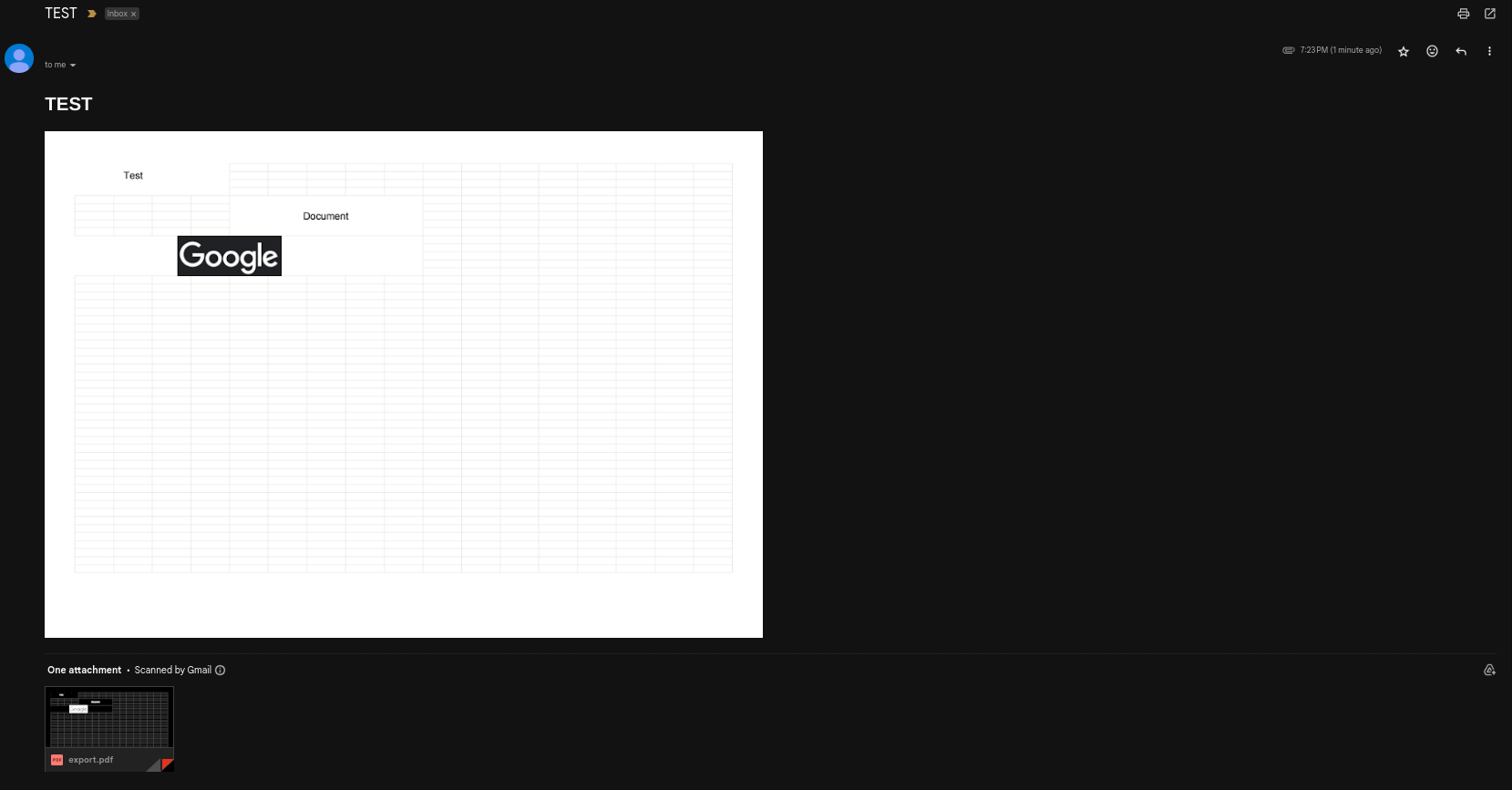I am trying to combine two codes that I found here: Google Sheet Range mail pdf Convert a gdoc into image
I want to achieve something that will send an email with the inline picture of specific range from a spreadsheet.
The code that I combined from two above is working very well and is sending an email but only if the image is sent as an attachments. I think that image is a blob so it should be fine to send it as it is, but somehow I am getting an error.
I would like to have the picture within the body of the email and pdf as an attachments. Do you know how it can be solved?
Error I am getting:
Exception: Invalid argument: inlineImages
/**
* This is a method for converting all pages in a PDF file to PNG images.
* PNG images are returned as BlobSource[].
* IMPORTANT: This method uses Drive API. Please enable Drive API at Advanced Google services.
*
* @param {Blob} blob Blob of PDF file.
* @return {BlobSource[]} PNG blobs.
*/
async function convertPDFToPNG_(blob) {
// Convert PDF to PNG images.
const cdnjs = "https://cdn.jsdelivr.net/npm/pdf-lib/dist/pdf-lib.min.js";
eval(UrlFetchApp.fetch(cdnjs).getContentText()); // Load pdf-lib
const setTimeout = function (f, t) { // Overwrite setTimeout with Google Apps Script.
Utilities.sleep(t);
return f();
}
const data = new Uint8Array(blob.getBytes());
const pdfData = await PDFLib.PDFDocument.load(data);
const pageLength = pdfData.getPageCount();
console.log(`Total pages: ${pageLength}`);
const obj = { imageBlobs: [], fileIds: [] };
for (let i = 0; i < pageLength; i++) {
console.log(`Processing page: ${i + 1}`);
const pdfDoc = await PDFLib.PDFDocument.create();
const [page] = await pdfDoc.copyPages(pdfData, [i]);
pdfDoc.addPage(page);
const bytes = await pdfDoc.save();
const blob = Utilities.newBlob([...new Int8Array(bytes)], MimeType.PDF, `sample${i + 1}.pdf`);
const id = DriveApp.createFile(blob).getId();
Utilities.sleep(4000); // This is used for preparing the thumbnail of the created file.
const link = Drive.Files.get(id, { fields: "thumbnailLink" }).thumbnailLink;
if (!link) {
throw new Error("In this case, please increase the value of 3000 in Utilities.sleep(3000), and test it again.");
}
const imageBlob = UrlFetchApp.fetch(link.replace(/\=s\d*/, "=s1000")).getBlob().setName(`page${i + 1}.png`);
obj.imageBlobs.push(imageBlob);
obj.fileIds.push(id);
}
obj.fileIds.forEach(id => DriveApp.getFileById(id).setTrashed(true));
return obj.imageBlobs;
}
// Please run this function.
async function myFunction() {
// Retrieve Spreadsheet and Sheet objects.
const ss = SpreadsheetApp.openById("IDIDIDIDIDIDIDIDID");
const sheet = ss.getSheetByName("ForEmail-SHEET-NAME");
// Retrieve PDF blob.
const url = `https://docs.google.com/spreadsheets/d/${ss.getId()}/export?format=pdf&range=B2:R52&gid=${sheet.getSheetId()}&size=6&portrait=false&`;
const pdfBlob = UrlFetchApp.fetch(url, { headers: { authorization: "Bearer " + ScriptApp.getOAuthToken() } }).getBlob();
const SOURCE_TEMPLATE = pdfBlob;
const TARGET_FOLDER = "FOLDER-ID";
// Use a method for converting all pages in a PDF file to PNG images.
const blob = pdfBlob
const imageBlobs = await convertPDFToPNG_(blob);
// As a sample, create PNG images as PNG files.
const folder = DriveApp.getFolderById(TARGET_FOLDER);
imageBlobs.forEach(b => folder.createFile(b));
MailApp.sendEmail({
to: "[email protected]",
cc: "" || null,
bcc: "" || null,
subject: "TEST",
body: "TEST",
inlineImages: imageBlobs,
attachments: [pdfBlob],
});
}

